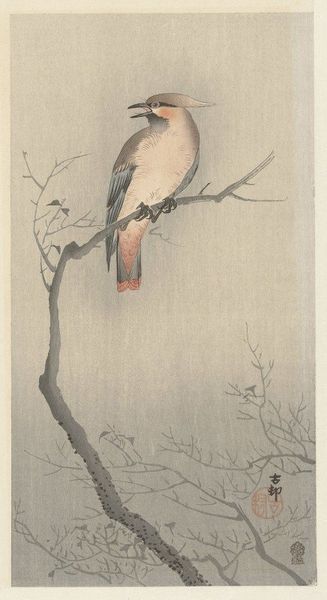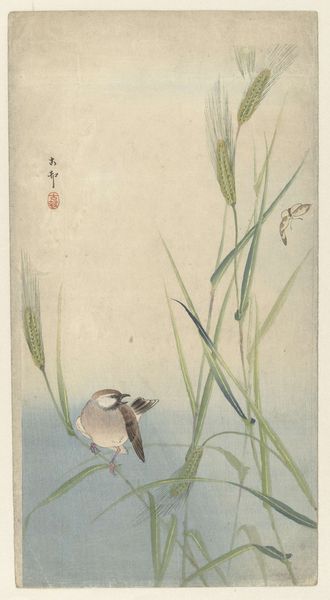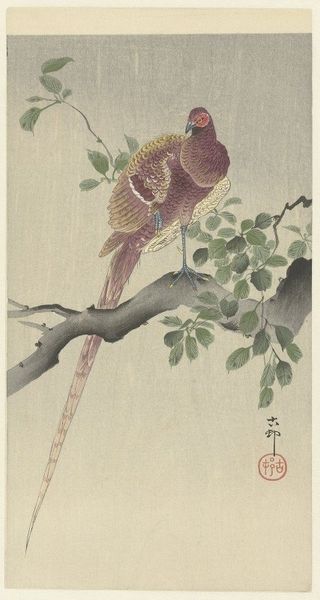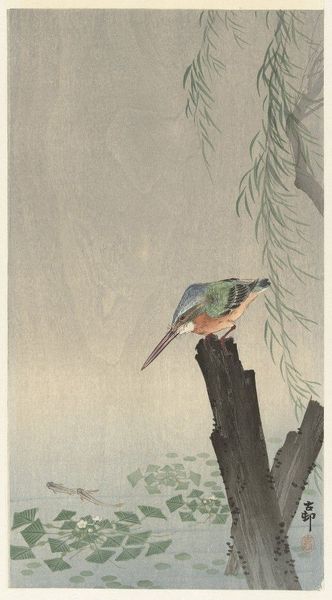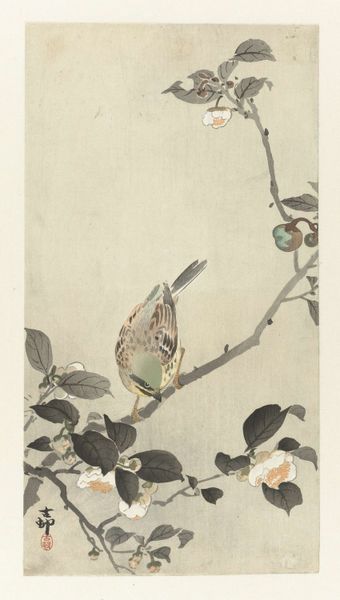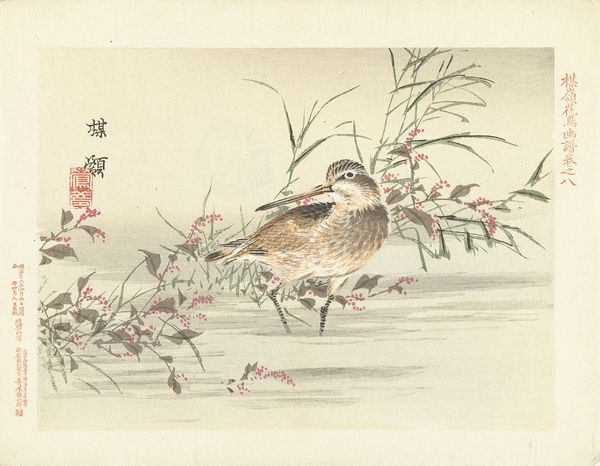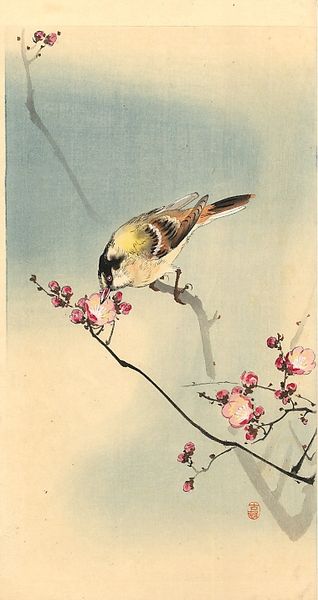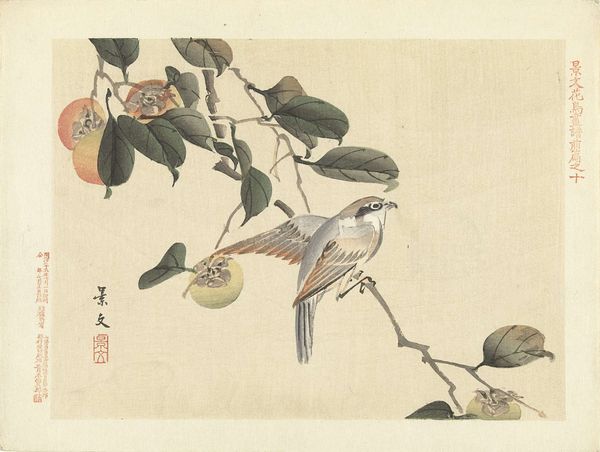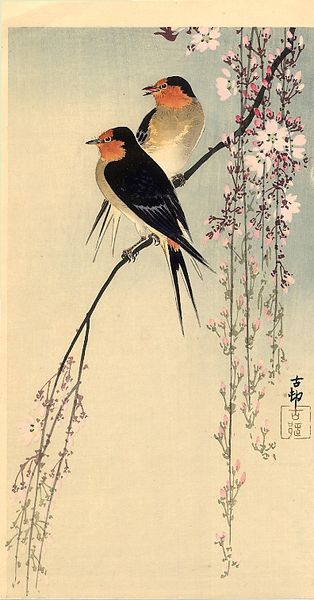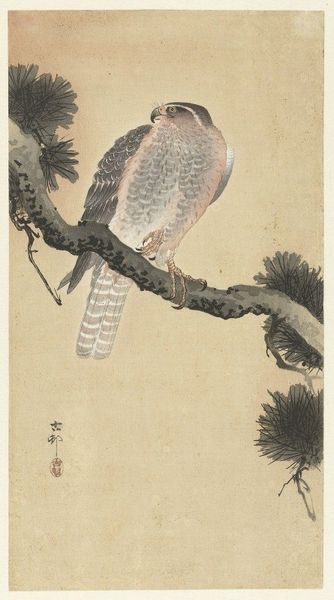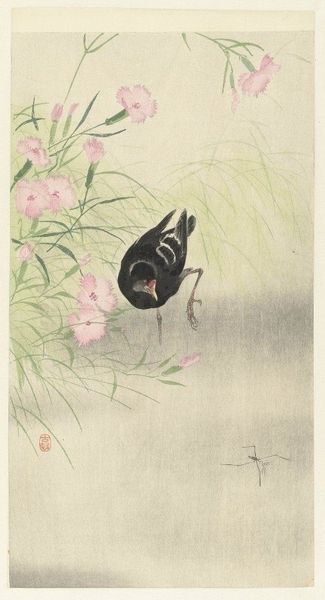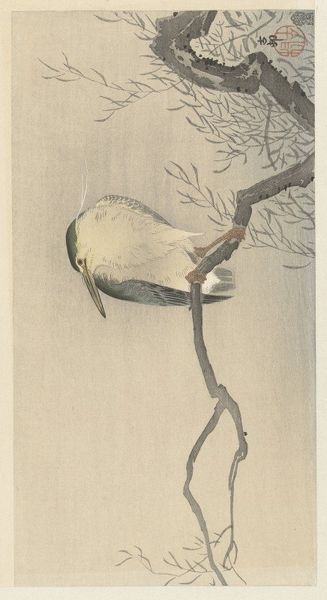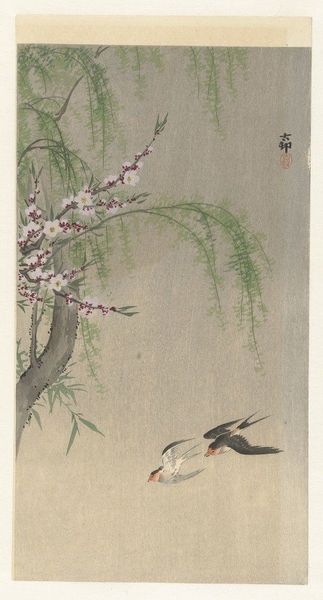
print, paper, ink, woodblock-print
# print
#
asian-art
#
landscape
#
ukiyo-e
#
paper
#
ink
#
woodblock-print
Copyright: Public domain
Editor: Looking at “Sparrows on bamboo tree” by Ohara Koson, I’m struck by the delicacy of the lines. It feels like a very precise rendering, yet conveys a sense of the natural world. How do you interpret this work? Curator: What stands out is the woodblock print process itself. Ukiyo-e, like this, involved a collaborative workshop: an artist who made the design, a block carver, and a printer. It moves away from the singular artistic genius. Think about the materiality of the work: paper, ink, woodblocks. These materials dictated the limitations, and subsequently, the aesthetics, of the final product. The layering of colours achieved with separate blocks... each carries labour and intention. Editor: So, you're focusing less on the birds and bamboo and more on how it was physically made? Curator: Precisely. Consider how Japonisme impacted Western art. It wasn’t just about adopting ‘oriental’ themes. It was about recognizing alternative methods of production, ones that challenged the Western notion of the artist as an individual, divorced from the labor of making. Editor: That makes me reconsider the composition; the flat perspective and simplified forms now seem less about aesthetics and more about a technique born from material constraints. Did these prints have a different kind of status because of their means of production? Curator: Exactly! These prints were produced for a wider market. Therefore, considering that is equally important as who is depicted on them. Thinking about the materials, techniques and economic backgrounds invites discussion. It is very relevant to interpreting not only Koson’s work, but much art production. Editor: It's fascinating how understanding the materials and the process gives you a completely different appreciation of the art. Curator: Indeed, it grounds the aesthetic in a social and economic reality.
Comments
No comments
Be the first to comment and join the conversation on the ultimate creative platform.
